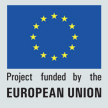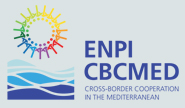Set-up of a multi-stakeholder table on SWM
(Responsible: Lazio Region)
Moving from an administrative analysis of water resources management at country and regional level (in each partner country involved), the most important stakeholders will be identified and a multi-stakeholder table set up to discuss during the project implementation on SWMED’s progress and results as well to involve the interested parties concerned in the participatory decision-making process regarding future plan and programs on SWM at territorial and national level.
The WP 2 is composed by the following activities to be completed by all partners:
Survey on Water Administration systems in partner countries WP 2.1
It’s a very important research activity necessary to produce a report on the administration of water systems in the Mediterranean. This ought to take into account the public administrative organization of the water service in the partner countries.
Therefore the investigation ought to indicate (among the others):
- Which public body or bodies in each partner country is (are) in charge with the planning and programming of interventions for the freshwater production facilities (such as well fields, desalination plants, surface water polishing plants) and waste water treatment plants.
- What role the different levels of public administration play in the water balance functions, water conservation and licensing of large-scale diversions of water, the determination of license fees and take the proceeds thereof.
- Which are the subjects (read bodies) in charge with the technical and administrative activities for the management and maintenance of (water) works and aqueducts, the distribution and collection of (1) water and (2) wastewater in the networks;
- Which subjects (body) ensure(s) the quality of water supplied to the consumers and, if different, which subjects (body) ensure(s) that water is tangibly supplied to the consumers at local level (i.e. in the Municipalities);
- Which subjects (body) contribute(s) to determine the drinking water tariff for users and whether this includes charges for waste water treatment or there is a separate charge for this kind of interventions.
- Which subjects (body) are (is) in charge with the reuse of clear water and sewage;
- Whether the public bodies (or other subjects) promote the public consultation amongst stakeholders and, if positive who they involve and how.
The research has a strong introductory character towards the activities that will follow in the implementation of the Action. The findings emerged will be integrated in the successive project surveys and studies while the information on the functioning of the administrative systems of water resources always taken into account in the final Reports to be drafted: Report on settlements adaptation to SWMED solutions (WP 4.1.2), Final report on tailor-made solutions for the project target areas identified (WP4.2.2), Final policy paper on SWM in water and territorial planning (WP 5.3).
Creation of a database for stakeholders in partner countries WP 2.2
This activity aims to identify the organizations, associations and more in general individuals and groups who may influence the performance of the project and at the same time have expectations about it. These may be internal to the partner organizations (administrative and technical staff, political representatives) and external (trade unions, consumers’ associations, environmental associations, trade and professional associations, local public bodies, agencies and offices).
The selection of stakeholders aims to identify a list of subjects for each project partner to be involved in the “water tables”. These represent a tool for the participatory process to public decisions on water resource, thought to go with the creation of “shared” ad-hoc SWMED solutions addressed to the project target areas in all partner countries (WP4) and with the elaboration of policy papers intended to integrate those solutions into the sartorial programs and plans at National and Regional level (WP5).
The criteria ought to comply with and be inspired by key concepts such as the transparency of information, the interest of the participants involved and the effective impact of their involvement. These should take into the account consultation procedures of public decisions in partner countries if these exist, thus the involvement of bodies normally called to attend the early stages of public consultation by the governments without excluding those subjects with a particular interest or experience in the matter that have not yet had the opportunity to be consulted.
Set-up of Multi-stakeholders water table on national/regional scale WP 2.3
The multi-stakeholders tables represent a method of participatory approach to decisions. Thus represent an arena consisting of managers and technical staff from the institution responsible for making decisions of public interest and interested parties (stakeholders) who wish to express their opinion on decisions to be taken. The water tables will be organized in all the partner countries in three different times, in order to get feed-back from stakeholders on specific issues regarding the project implementation. In other words, the multi-stakeholder water tables is going to be organized following all the project activities and it will be the place where main decisions concerning the project will be agreed: they will comment draft deliverables, review the final Policy Paper, contribute to the organization of dissemination events and influence the best methodology and “communication” instruments to use for each territory to make people awareness and involve them in the decision process of the envisaged solutions implementation. For this reason some main opinion formers and influential figures (both by government and Media) will be invited to take parts to these “tables”


